Attractions · Europe · Going Out · Regions · Spain · Western Europe
5 things to do in Cordoba, Spain
For those looking to plan a city break holiday to Spain, Cordoba comes highly recommended. Situated in an idyllic riverfront location in the popular Andalusian region of Spain, Cordoba is decidedly picturesque and unassuming. Once the Spanish capital of a mighty Islamic caliphate, Cordoba today seamlessly blends its past lives to create a city in harmony with its past and the present. Below is a list of some things to do in Cordoba, but this will only help you scratch the surface of this beguiling and charming city.
1. Visit the Mezquita
Located in the historic and spiritual heart of Cordoba, the Mezquita stands as a reminder of the citys Moorish past and its zenith as one of the principal centres in the medieval world. Originally erected in the 8th Century to serve as a mosque for its Islamic inhabitants, it was reclaimed along with the rest of the city during a Christian conquest and repurposed as a Renaissance-style Cathedral, creating the unusual coupling of styles you now see.
Today, its doors are open to visitors wishing to wander between the great buttresses and columns supporting the lustrously designed arches and bell tower above. The idyllic courtyard enjoys dappled shade provided by cypress and olive trees, while the gentle trickling water from the fountains provide a touch of serenity. Visitors can either choose to explore separately or as part of a tour group from 10am. Admission is free before 10am but afterwards prices are the minimal price of 8 Euros per person.
 2. Walk across the Roman Bridge of Cordoba
Not only does the Puente Romano bridge connect one side of Cordoba with the other, it also keeps the city in touching distance of its past. Built in accordance with the wishes of the Roman Emperor Augustus, the bridge makes for an impressive sight of 16 consecutive arches spanning across the 820 feet of the Guadalquivir River. Nowadays the bridge is entirely pedestrianised and is used by visitors who come to follow in the footsteps of the Romans and Moors who crossed the bridge to the old quarter or to the Mezquita.
2. Walk across the Roman Bridge of Cordoba
Not only does the Puente Romano bridge connect one side of Cordoba with the other, it also keeps the city in touching distance of its past. Built in accordance with the wishes of the Roman Emperor Augustus, the bridge makes for an impressive sight of 16 consecutive arches spanning across the 820 feet of the Guadalquivir River. Nowadays the bridge is entirely pedestrianised and is used by visitors who come to follow in the footsteps of the Romans and Moors who crossed the bridge to the old quarter or to the Mezquita.
 3. Explore the Alcazar Gardens
Located in the shadow of an Episcopal Palace and former abode of an ancient line of Christian Kings, the Alcazar Gardens are a popular attraction that never fails to delight those who take a stroll around it. Despite its obvious Christian connection, the roots of this garden delve back to the days of the Moors who are responsible for much of its typically Islamic and geometrically designed garden arrangements including ponds, fountains and selection of aromatic plants.
3. Explore the Alcazar Gardens
Located in the shadow of an Episcopal Palace and former abode of an ancient line of Christian Kings, the Alcazar Gardens are a popular attraction that never fails to delight those who take a stroll around it. Despite its obvious Christian connection, the roots of this garden delve back to the days of the Moors who are responsible for much of its typically Islamic and geometrically designed garden arrangements including ponds, fountains and selection of aromatic plants.
 After taking a leisurely walk around the grounds, visitors can climb the steps of the Torre de los Leones (or, Lions Tower) pitched at the end of the gardens which boasts spectacular views of the city and surrounding countryside.
4. Discover the Juderia
Cordoba is a city with many different faces, each with a distinctive character but perhaps none is as characterful as the Old Jewish Quarter or the Juderia. An atmospheric part of town, Cordobas Jewish Quarter consists of a labyrinth of picturesque narrow cobbled lanes, jewellery shops and family-owned silversmiths. Cordobas Jewish population have lived and even flourished, cohabiting alongside the Romans, Moors and Christians, establishing themselves as courtiers and members of the citys medieval intellectual elite.
After taking a leisurely walk around the grounds, visitors can climb the steps of the Torre de los Leones (or, Lions Tower) pitched at the end of the gardens which boasts spectacular views of the city and surrounding countryside.
4. Discover the Juderia
Cordoba is a city with many different faces, each with a distinctive character but perhaps none is as characterful as the Old Jewish Quarter or the Juderia. An atmospheric part of town, Cordobas Jewish Quarter consists of a labyrinth of picturesque narrow cobbled lanes, jewellery shops and family-owned silversmiths. Cordobas Jewish population have lived and even flourished, cohabiting alongside the Romans, Moors and Christians, establishing themselves as courtiers and members of the citys medieval intellectual elite.
 Concealed among the rows of whitewashed townhouses is an unsuspecting entrance to what is a building of great historical significance, Cordoba Synagogue. The wonderfully preserved UNESCO-listed Cordoba Synagogue features a fascinating museum which is well worth a visit.
5. Take a photograph in Callejón de las Flores
The narrow cobbled lane of Callejón de las Flores is beautifully coloured with traditional whitewashed townhouses decked with terracotta plant pots brimming with brightly coloured flowers so keep your camera to hand!
Concealed among the rows of whitewashed townhouses is an unsuspecting entrance to what is a building of great historical significance, Cordoba Synagogue. The wonderfully preserved UNESCO-listed Cordoba Synagogue features a fascinating museum which is well worth a visit.
5. Take a photograph in Callejón de las Flores
The narrow cobbled lane of Callejón de las Flores is beautifully coloured with traditional whitewashed townhouses decked with terracotta plant pots brimming with brightly coloured flowers so keep your camera to hand!
 Nick Munday is Managing Director at Classic Collection Holidays.
If you would like to be a guest blogger on A Luxury Travel Blog in order to raise your profile, please contact us.
Nick Munday is Managing Director at Classic Collection Holidays.
If you would like to be a guest blogger on A Luxury Travel Blog in order to raise your profile, please contact us.
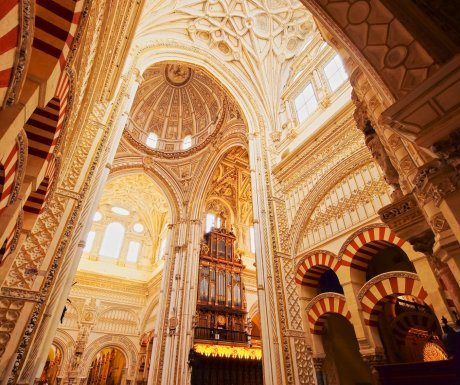 2. Walk across the Roman Bridge of Cordoba
Not only does the Puente Romano bridge connect one side of Cordoba with the other, it also keeps the city in touching distance of its past. Built in accordance with the wishes of the Roman Emperor Augustus, the bridge makes for an impressive sight of 16 consecutive arches spanning across the 820 feet of the Guadalquivir River. Nowadays the bridge is entirely pedestrianised and is used by visitors who come to follow in the footsteps of the Romans and Moors who crossed the bridge to the old quarter or to the Mezquita.
2. Walk across the Roman Bridge of Cordoba
Not only does the Puente Romano bridge connect one side of Cordoba with the other, it also keeps the city in touching distance of its past. Built in accordance with the wishes of the Roman Emperor Augustus, the bridge makes for an impressive sight of 16 consecutive arches spanning across the 820 feet of the Guadalquivir River. Nowadays the bridge is entirely pedestrianised and is used by visitors who come to follow in the footsteps of the Romans and Moors who crossed the bridge to the old quarter or to the Mezquita.
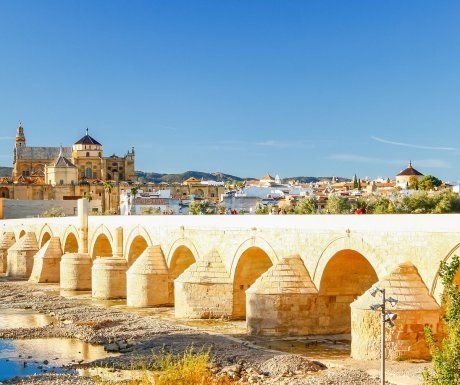 3. Explore the Alcazar Gardens
Located in the shadow of an Episcopal Palace and former abode of an ancient line of Christian Kings, the Alcazar Gardens are a popular attraction that never fails to delight those who take a stroll around it. Despite its obvious Christian connection, the roots of this garden delve back to the days of the Moors who are responsible for much of its typically Islamic and geometrically designed garden arrangements including ponds, fountains and selection of aromatic plants.
3. Explore the Alcazar Gardens
Located in the shadow of an Episcopal Palace and former abode of an ancient line of Christian Kings, the Alcazar Gardens are a popular attraction that never fails to delight those who take a stroll around it. Despite its obvious Christian connection, the roots of this garden delve back to the days of the Moors who are responsible for much of its typically Islamic and geometrically designed garden arrangements including ponds, fountains and selection of aromatic plants.
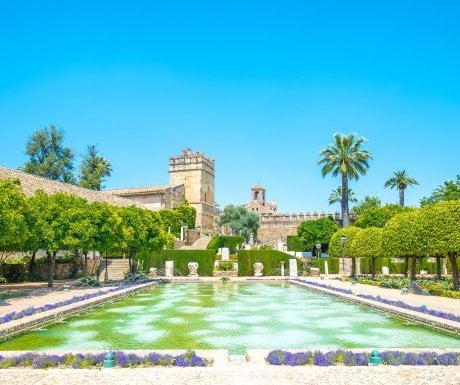 After taking a leisurely walk around the grounds, visitors can climb the steps of the Torre de los Leones (or, Lions Tower) pitched at the end of the gardens which boasts spectacular views of the city and surrounding countryside.
4. Discover the Juderia
Cordoba is a city with many different faces, each with a distinctive character but perhaps none is as characterful as the Old Jewish Quarter or the Juderia. An atmospheric part of town, Cordobas Jewish Quarter consists of a labyrinth of picturesque narrow cobbled lanes, jewellery shops and family-owned silversmiths. Cordobas Jewish population have lived and even flourished, cohabiting alongside the Romans, Moors and Christians, establishing themselves as courtiers and members of the citys medieval intellectual elite.
After taking a leisurely walk around the grounds, visitors can climb the steps of the Torre de los Leones (or, Lions Tower) pitched at the end of the gardens which boasts spectacular views of the city and surrounding countryside.
4. Discover the Juderia
Cordoba is a city with many different faces, each with a distinctive character but perhaps none is as characterful as the Old Jewish Quarter or the Juderia. An atmospheric part of town, Cordobas Jewish Quarter consists of a labyrinth of picturesque narrow cobbled lanes, jewellery shops and family-owned silversmiths. Cordobas Jewish population have lived and even flourished, cohabiting alongside the Romans, Moors and Christians, establishing themselves as courtiers and members of the citys medieval intellectual elite.
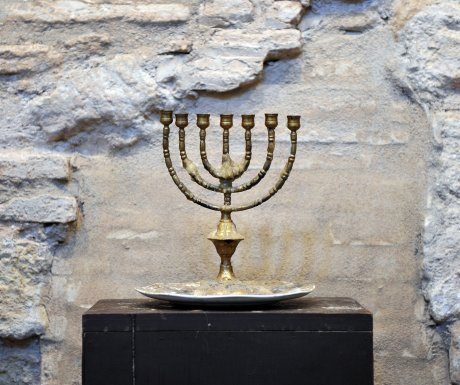 Concealed among the rows of whitewashed townhouses is an unsuspecting entrance to what is a building of great historical significance, Cordoba Synagogue. The wonderfully preserved UNESCO-listed Cordoba Synagogue features a fascinating museum which is well worth a visit.
5. Take a photograph in Callejón de las Flores
The narrow cobbled lane of Callejón de las Flores is beautifully coloured with traditional whitewashed townhouses decked with terracotta plant pots brimming with brightly coloured flowers so keep your camera to hand!
Concealed among the rows of whitewashed townhouses is an unsuspecting entrance to what is a building of great historical significance, Cordoba Synagogue. The wonderfully preserved UNESCO-listed Cordoba Synagogue features a fascinating museum which is well worth a visit.
5. Take a photograph in Callejón de las Flores
The narrow cobbled lane of Callejón de las Flores is beautifully coloured with traditional whitewashed townhouses decked with terracotta plant pots brimming with brightly coloured flowers so keep your camera to hand!
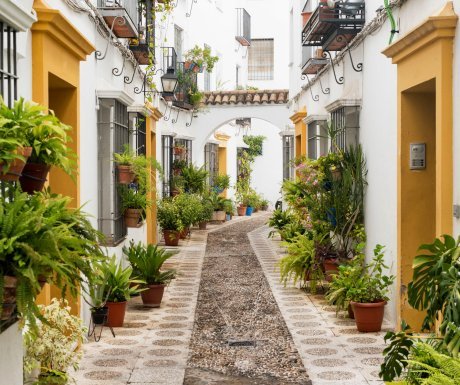 Nick Munday is Managing Director at Classic Collection Holidays.
If you would like to be a guest blogger on A Luxury Travel Blog in order to raise your profile, please contact us.
Nick Munday is Managing Director at Classic Collection Holidays.
If you would like to be a guest blogger on A Luxury Travel Blog in order to raise your profile, please contact us.Did you enjoy this article?
Receive similar content direct to your inbox.


I would add a 6th item to this list.
Medina Azahara – it is only a few miles from the city and can be accessed via bus, rental car or taxi. It has a museum as well as the site itself. On a pretty day it is a wonderful attraction, and amazing to realize that it is also 1000 years old and only 10%-20% has been excavated.
Hi JM,
To tell you the truth, I was debating whether to include Medina Azahara as it such a worth while site to visit, but thought against it as it required a little bit of journeying. I would strongly recommend it however!
May I offer a few comments and corrections?:
It’s not Mezquita, it’s the Mezquita.
It was originally erected in the 8th century, not the 11th.
It does not contain any archers.
It’s principal, not principle.
In what way is the bridge ‘served by visitors’?
It’s not Juderia, it’s the Juderia.
Who did the Jewish population ‘cohabitate’ with while they were living alongside the Romans, Moors and Christians?
If the synagogue is ‘survived by’ other synagogues, this implies that it is dead or defunct. How then could it contain a museum and be well worth a visit?
The Callejón de las Flores is one lane, not a part of town. It does not contain ‘narrow cobbled lanes’ as it is just one lane.
Thank you, John… I have amended Nick’s article accordingly.
John sounds like a piece of work. The grammar police needs to wind his neck in.